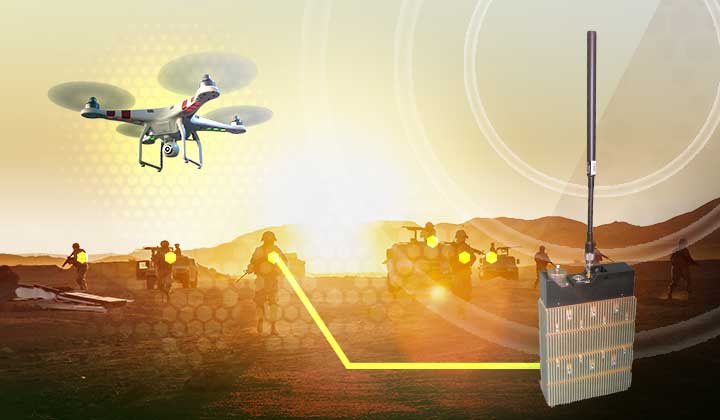The Software-Driven Battlefield: EW, SIGINT, Cyber, AI, and the Future of Conflict
Dominating Electronic Warfare: Precisely

“As open systems, Agile practices, and DevSecOps become more widely accepted, software-driven capability can now be where it is needed in a fraction of the time it would take to field hardware just a decade ago.”
Events following the Russian invasion of Ukraine have highlighted a stark new reality in modern conflict — the importance of information on the 21st century battlefield. As U.S. Government leaders and allies combat “false flags” and misleading stories, they also work to harness data and intelligence more powerfully with faster, more agile technology. Today’s urban battlefield is complex and connected, with threats and vulnerabilities changing and broadcasting in real time around the world. These events should be eye-opening for all of us and drive strategies for modernizing our own national security capabilities to meet peer and near-peer challenges. While traditional kinetic military capabilities are always of concern, the importance of electronic warfare (EW), electronic attack (EA), signals intelligence (SIGINT), cyber warfare, and artificial intelligence (AI) has become more central to modern conflict and competition. Information warfare (IW), EW, and non-kinetic cyber capabilities are crucial to providing rapid tactical, operational, and strategic intelligence, accurate situational awareness, indications and warnings (I&W), and assessment of hostile threats.
Unlike just a few decades ago, today the U.S. Government is no longer leading the development of technologies that are defining 21st century warfare, such as AI, 5G communications, and cyber effects. Cutting-edge software-driven technologies are overwhelmingly developed and matured by industry and commercial partners. This has pushed the Department of Defense (DoD) to embrace public-private partnerships as never before, but also highlights the dire need for capabilities that don’t fit the traditional mold in either development or acquisition.
The dynamic threat landscape of today demands this collaboration. The U.S. Government is embracing concepts such as open architecture – which makes upgrades of software modules and component swapping much simpler. This software-centric dynamic is driven by a rapidly growing EW and cyber threat environment, which far outpaces the long timelines of traditional DoD programs. Open architecture enables rapid deployment of new capabilities and helps ensure future modernization by emphasizing software over hardware. This also reduces dependencies on single providers, supports third party integration, and allows for the development of forward-leaning EA techniques and the use of emerging tools such as AI and machine learning (ML) for threat detection and defeat.
CACI’s team for the U.S. Navy’s Spectral weapon system is a great example of this collaboration, as CACI and its partners have worked closely to articulate and build out new standards across the converged EW/SIGINT/IW space, staying ahead of the rapidly changing landscape in fields such as 5G communications and distributed computing. CACI and its partners Northrop Grumman, Raytheon Technologies, BAE Systems, Sierra Nevada Corporation, and Dell Technologies have produced breakthrough solutions that bring together best-in-class SIGINT, EW, and cyber solutions that are informed by extensive mission experience, and utilize our world-class Agile software development and DevSecOps expertise and practices.
Innovation and collaboration in software development, like the work done by CACI and its Spectral partners, is driving real operational capability advances across the DoD, such as enhanced signal recognition and parameter characterization, for example. Software-defined capability that enables third party integration is the force behind rapid innovation in SIGINT processing improvements. CACI has worked extensively in this field even before joining up with its Spectral partners. We have led the development of the Navy’s distributed SIGINT operations capabilities since 2003 and worked to extend geolocation sensor network operations. Today, CACI is an industry leader in joint, national, coalition SIGINT, and multi-INT interoperation standards.
With CACI’s deep mission experience, paired with our partners’ technical depth, collaboration on a program like Spectral will yield long term benefits in other areas where close collaboration between the defense industry and the commercial technology sector will be called on even more to speed capability to where it is most needed.
As open systems, Agile practices, and DevSecOps become more widely accepted, software-driven capability can now be advanced to where it is needed in a fraction of the time it would take to field hardware just a decade ago. Today, on a Navy ship, a radar is not just a radar sending out a signal to detect the enemy. CACI and its partners are now turning radars into full spectrum sensors to deliver next generation converged SIGINT/EW to the fleet at the speed of need. Together with our Spectral partners, we have demonstrated that we have put in place infrastructure to get to where we need to go and push developing solutions into operational reality to meet the needs of 21st century conflict and competition.
Dominating Electronic Warfare: Precisely
